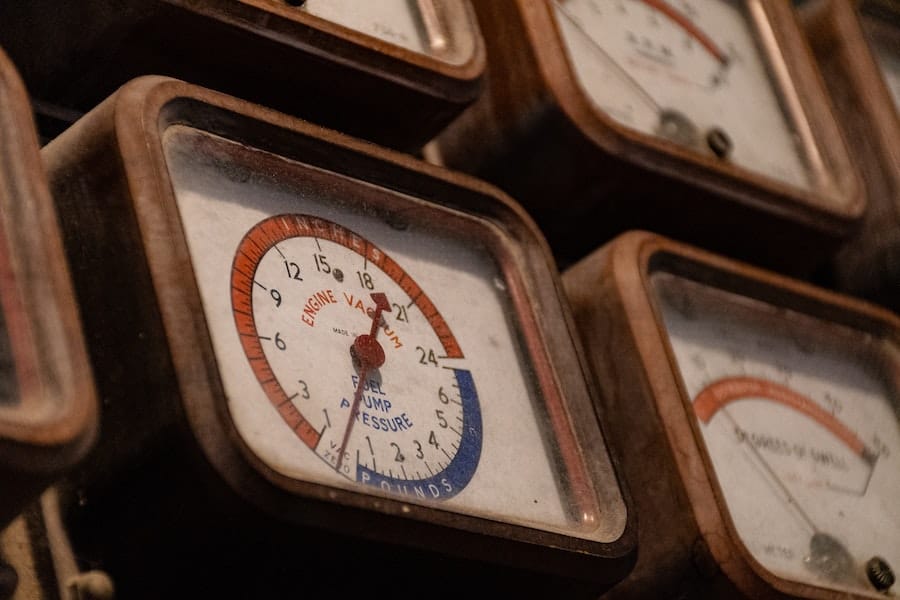Have you ever wondered where the water meter is located in your home? Understanding the placement of your water meter is crucial for various reasons, from monitoring your water usage to identifying potential leaks and ensuring accurate utility billing. In this article, we will provide you with a comprehensive guide to finding your water meter, whether on the exterior or interior of your property. Additionally, we will explore the tools and techniques you can use to detect the water meter, how to read its readings, and essential maintenance tips to keep it in proper working condition. Let’s dive in and demystify the quest for the elusive water meter!
Where Is The Water Meter Located?
The location of the water meter in your home can vary depending on the property’s layout and local regulations. In most cases, you can find the water meter either outside near the property line, often in the front yard or along the side of the house, or inside in areas like the basement, utility room, garage, or under the kitchen sink. To pinpoint its location, look for a small metal or plastic cover marked “water meter” on the ground outside, or check the aforementioned indoor spots. If you need help locating it, consider contacting your water utility company for assistance. Remember, finding the water meter is essential for monitoring water usage and addressing potential issues promptly.
Importance Of Knowing The Water Meter’s Location
Knowing the water meter’s location in your home holds significant importance for several reasons:
Monitoring Water Usage: The water meter provides real-time data on your water consumption. By regularly checking the meter, you can keep track of how much water your household is using. This information is invaluable for managing water consumption efficiently and identifying any sudden spikes in usage that may indicate leaks or wastage.
Conservation and Cost Management: Understanding water usage empowers you to implement water-saving practices effectively. With this knowledge, you can make informed decisions on using water wisely, reducing unnecessary usage, and ultimately cutting down water bills. Conserving water not only benefits your wallet but also helps in promoting sustainability and protecting the environment.
Detecting Leaks: The water meter serves as an excellent tool for leak detection. If you notice a constant flow of water on the meter, even when all faucets are turned off, it might indicate a hidden leak in the plumbing system. Detecting and fixing leaks promptly can save water, prevent property damage, and avoid costly repairs.
Property Maintenance: Water meters can be affected by various environmental factors or wear and tear. Knowing its location lets you perform routine maintenance, ensuring it operates accurately. Proper maintenance can extend the lifespan of the meter, reducing the likelihood of unexpected malfunctions or inaccurate readings.
Compliance with Regulations: Some areas may have specific regulations regarding water meter access and maintenance. Knowing the meter’s location ensures you can comply with these regulations and cooperate with utility personnel during inspections or repairs.
Property Transactions: When buying or selling a property, knowing the water meter’s location is essential. Buyers must be aware of its condition and potential issues, while sellers should provide accurate information about water usage and any existing problems.
Common Water Meter Locations
Water meters can be found in various locations, depending on the type of property and local regulations. Here are some common water meter locations:
Exterior Near The Property Line:
In many single-family homes, the water meter is installed in a small underground pit or utility box located near the property line, usually close to the sidewalk or curb. It is often covered with a metal or plastic lid marked “water meter.”
Front Yard:
In some residential properties, especially older ones, the water meter can be found in the front yard, typically close to the house’s exterior wall. It may be concealed within a meter box or covered with a protective cap.
Side Of The House:
For properties with limited front yard space, the water meter may be situated along the side of the house, near the exterior wall. Look for a meter box or access panel in this area.
Backyard:
Sometimes, especially for more significant properties or regions with specific regulations, the water meter might be in the backyard. It could be near the back of the house or along the fence line.
Basement Or Utility Room:
In some homes, particularly older constructions or those in colder climates, the water meter may be indoors, often in the basement or utility room. It could be mounted on a wall or placed on the floor.
How To Locate The Water Meter?
Locating the water meter in your home can be a straightforward process if you follow these step-by-step guidelines:
- If your property is a house with a front yard, start by looking for a small metal or plastic lid marked “water meter” near the property line, often close to the sidewalk or curb. Lift the lid gently to reveal the water meter.
- If you need help finding the water meter near the property line, search the front yard and the sides of your house. Water meters are commonly placed along the exterior walls, so check for meter boxes or access panels in these areas.
- For some significantly larger properties or those with specific regulations, the water meter might be located in the backyard. Check along the back of the house or near the fence line for any meter boxes or lids.
- If you can’t find the water meter outside, it might be indoors. Check the basement, utility room, garage, or crawl space. Look for a wall-mounted box or a small access panel on the floor.
- In apartments or smaller properties, especially those with individual unit water meters, check under the kitchen sink or in a nearby cabinet for the water meter.
Final Words
In conclusion, understanding the location and significance of your water meter is crucial for responsible water management and efficient household functioning. By regularly monitoring water usage, conserving water, and promptly addressing any issues, you contribute not only to cost savings but also to environmental sustainability. Remember, a water meter is a valuable tool in detecting leaks and ensuring the proper functioning of your plumbing system. Whether it’s located outside near the property line or indoors in various spots, take the time to locate your water meter and familiarize yourself with its readings.
FAQ’s
How do I find the water meter in my home?
The water meter can be located both outside and inside the property. For outdoor meters, check near the property line, in the front yard, along the side of the house, or in the backyard. For indoor meters, look in places like the basement, utility room, garage, or under the kitchen sink. Sometimes, it may be covered by a small metal or plastic lid marked “water meter.”
What tools can I use to detect the water meter?
Essential tools like a flashlight and a shovel may be helpful for outdoor meters. For more advanced detection, you can use electronic pipe locators. In complex situations or if you can’t find the meter, consider seeking professional assistance or contacting your water utility company.
How often should I check my water meter?
Checking your water meter regularly is beneficial. It’s a good practice to monitor it at least once a month to keep track of your water usage and detect any sudden changes or leaks promptly.



















Leave a Reply